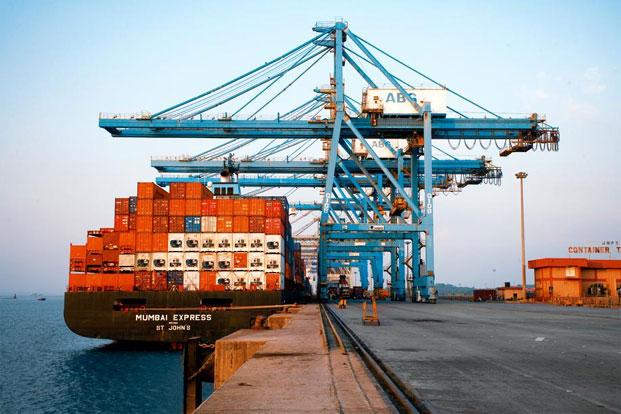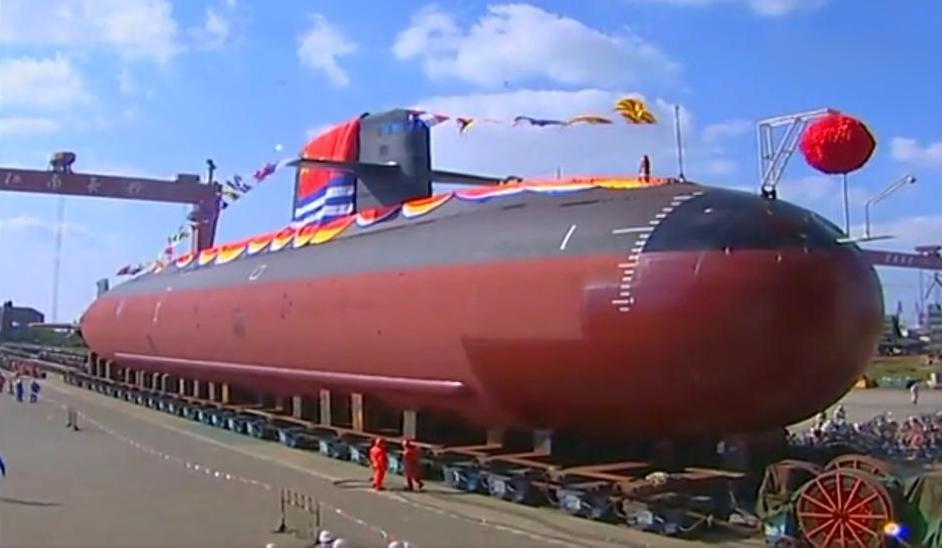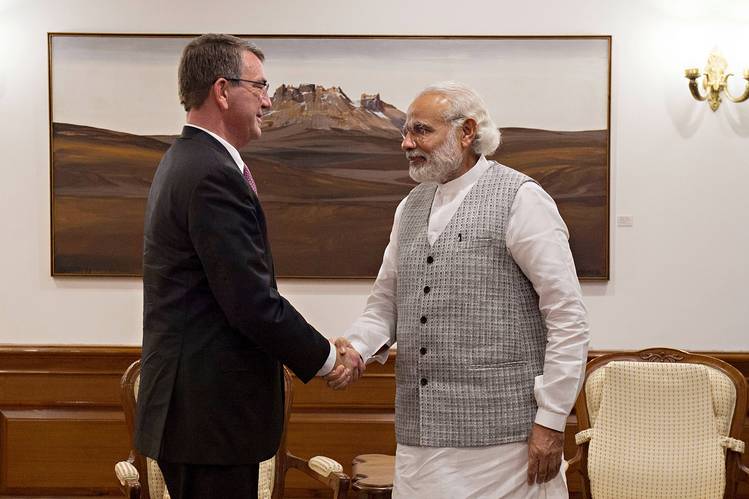India’s Role in the Asia-Pacific Topic Week
By Ryan Kuhns
The notion that China and India have fought only one war with each other in their civilizations’ long histories has sometimes been used to preface or bookend conversations about Sino-Indian strategic rivalry. It would seem that this narrative would require a sort of continuous geopolitics, the consistent orientation of collective interests and power and their relationship with geography. In fact, the geopolitical facts of the past do not fully link up with the realities of the 21st century. Not only have the mountain passes and peaks of the Himalayas become zones for potential conflict, where in the past they served as natural buffers, but the shared space of the Indo-Pacific also links the interests and security concerns of present day India and China.
Despite the potential for friction, a perspective that is overly obsessed with the potential for strategic rivalry between India and China can obscure where their interests meet. It also fails to fully contend with the very real and powerful aspects of economic and political globalization, as well as Asian perspectives on how the current iteration of the global system should change in order to accommodate the rise of its most accomplished and promising states. This may be why security narratives that hone in on the potential for direct strategic rivalry in the Sino-Indian relationship are so often thwarted by rebuttals which simply point to India and China’s regional and international cooperation on infrastructure projects, trade, and in multi-lateral forums. In order to more fully understand potential or actual strategic rivalry dynamics between China and India, it may be necessary to widen one’s view to the regional and super-regional periphery, to India and China’s potential partners in the maritime realm. The maritime domain provides the most room for realistic maneuver between the two countries in that it eschews an overt continental buildup along their contested border while taking advantage of the Indo-Pacific’s political and economic complexity.
The potential for strategic maritime competition generally lies in maintaining the ability to carry out sea control / sea denial missions and the maintenance of a nuclear second strike capability. India and China both consider sea control to be a crucial element of their national security. China’s colonial experience and its wars with the Japanese Empire both highlighted the importance of a capable navy. India’s recent experiences with seaborne terrorism and its memory of American carrier diplomacy in its 1971 war with Pakistan have also served a similar purpose. Outside of their continental and near seas interests, both countries’ economies rely on the safe passage of goods and energy. India’s overseas trade contributes to 90 percent of its foreign trade by volume and around 70-77 percent of its trade value. 80 percent of India’s demand for oil is met by imports from overseas. Similarly, China’s economy relies heavily on imported energy, with over 85 percent of its oil demand met by overseas imports, two-thirds of which pass through the Indian Ocean Region (IOR) and the Straits of Malacca. 90 percent of China’s trade volume and 65 percent of its foreign trade value come via the sea, much of which also passes through the IOR. For growing Asian economies with the means to project power, these figures have justified the expansion of naval capabilities and greater operational distances.

At the same time, India and China’s simultaneous pursuit of a more robust maritime presence has spooked each country in turn. As a more confident Chinese maritime strategy has driven an expansion of sorts into the IOR, some Indian analysts have become increasingly alarmed by the so-called “string of pearls” and/or Maritime Silk Road initiative, both of which may serve to further entrench Chinese interests in the IOR. While Chinese submarines had been sighted before in the IOR, many Indian defense experts were particularly worried by the appearance of a Chinese submarine at the Sri Lankan Colombo International Container Terminal (CICT) in 2014, which is a transit point for 48 percent of shipping bound for India. India has replied in turn by reemphasizing its desire to bolster its naval capabilities through indigenously produced, modern craft and through its own economic and geopolitical maneuvering. India is preparing to relax its cabotage laws in order to decrease its reliance on shipping from ports like the CICT. It is also working towards the construction of deep water ports of its own near major international shipping lanes. India has also expanded its cooperation with Japan and Vietnam. Japan and India plan to “deepen” their “bi-lateral defense relationship” and work together on infrastructure projects on the Andaman and Nicobar Islands, northwest of the Strait of Malacca. India‘s growing cooperation with Vietnam has included a line of credit from India to Vietnam for Ocean Patrol Vessels, an Indian commitment to the training of 500 Vietnamese submariners, Indian support for Vietnam’s possible access to the BrahMos supersonic cruise missile, and plans for the Indian construction of a satellite tracking station in Vietnam.
The expansion of the Sino-Indian action-reaction cycles to their respective strategic peripheries may be illustrative of what Chietigj Bajpaee refers to as a “nested security dilemma.” While there are certainly dangers to broadening the points of potential conflict between two powers, India and China’s moves to shore up their own economic and physical security through approaching potential partners in the region has also afforded the two powers a certain level of flexibility when it comes to strategic competition; providing opportunities for balancing each other with potential strategic competitors in an effort to sap the other’s efforts at expanding their operational and strategic reach while maintaining the productive aspects of their bi-lateral relationship. The most important relationships to India and China in this regard may be with the United States and Pakistan respectively.
The PRC’s relationship with Pakistan goes back to shortly after the emergence of both nations. Pakistan has served as a crucial element of China’s effort to reduce India’s threat of revanchism. Pakistan also helped partially balance India’s close relationship with the Soviet Union during the Sino-Soviet split, and served as the diplomatic bridge to the United States, producing perhaps the most pivotal re-alignment of the Cold War. Today, Pakistan serves as a potential corridor for China’s efforts to circumvent its “Malacca dilemma.” It also looks as if Pakistan’s maritime capabilities will become increasingly important for augmenting China’s strategic interests in South Asia and the IOR. Last year’s agreement between China and Pakistan for eight Type 41 Yuan-class diesel-electric submarines, the largest of China’s arms deals to date, provides the means for Pakistan to complicate not only India’s ability to operate in Pakistan’s littorals, but may serve as the genesis of Pakistan’s future submarine-based nuclear deterrent.

US-India détente has been slow coming and cyclical in nature but the end of the Cold War moved things along. As China’s assertive posture in the South China Sea began to rile the United States, India’s position as a core partner in the US’s “Asia-Pacific Rebalance” has been highlighted by high level visits from the United States and grand pronouncements regarding the potential of US-Indian partnership. US Secretary of Defense Ash Carter’s efforts seem to have yielded an agreement “in principle” on the Logistics Exchange Memorandum of Agreement. The US ambassador to India has also publicly expressed the desire, on the part of the US, to supply India with American aircraft and defense technology, highlighting that there “is no other country in the world that we are supporting as an emerging global defense leader” and that “[n]ever [has the US] actively supported the indigenous development of an aircraft carrier program in another country.”

Even though the Chinese relationship with Pakistan appears, at least publicly, less ambivalent than burgeoning US-Indian ties, the Indian relationship with the United States could be extremely important for India as it attempts to build a navy that may cope with the enormous task of controlling the IOR while maintaining its commitment to continental defense. While the US may continue to push for direct Indian participation in meeting China’s increasingly assertive stance in the South China Sea, it is in India’s interest to build its capabilities for affecting influence in its regional seas first, and relieving and supporting the US in the IOR so that it may put pressure on China in the South and East China seas. Also, up until a certain point, this creates the conditions for India’s plausible deniability in China’s security woes with the United States and China’s possible subsequent difficulty in pulling its navy away from its immediate maritime periphery. China, through providing a great deal of military equipment to Pakistan and developing its submarine capabilities, thus attempts to complicate India’s regional maritime security calculations in such a way that it works to obstruct its larger regional and international goals.
While one can observe patterns, the true nature of these developing strategic maritime relationships never appears totally clear. While China professes itself as an “all-weather friend” to Pakistan, it has also been cautious about looking too close to its number one arms customer and India’s main rival. The United States, on the other hand, driven by the imperatives of its Global War on Terror and its legacy of defense cooperation with Islamabad, continues to sell military equipment and platforms to Pakistan. Of course, the US-China relations is more often defined by their mutual interest than by where they clash. Finally, India and China maintain meaningful and productive contacts. With regards to security issues, Beijing and New Delhi have institutionalized a “Maritime Affairs Dialogue”, are working towards a military hotline, and meet in multi-lateral forums with other major powers, such as Russia, to present unified visions on regional and global issues.
This lack of solid commitment to overt balancing does not reflect a level of uncertainty about each country’s respective national interests in regards to the strategic orientation of the other. It is in China and India’s best interests to not concretely and directly align themselves with Pakistan and the United States due to the fact that the actions of their allies could reduce their strategic flexibility. China has long been concerned with internal unrest in Pakistan and with how Pakistan’s issues with terror have affected both Chinese citizens in Pakistan and bled over into its own restive regions. Pakistan’s tense relationship with India also adds a level of unpredictability to the strategic situation in South Asia, a cauldron that China would do well to avoid if it wants to protect its maritime and continental assets. India’s approach to its growing relationship with the United States also exhibits some anxieties about becoming involved in the growing clashes between Beijing and Washington. As one of India’s leading intellectuals said in his analysis of the Modi boom in US-Indian relations, “Do we really think we will challenge the Chinese [in the South China Sea] with the Americans, when all that the Chinese have to do is take a little walk across our vast borders to make us feel vulnerable?”
While an ostensibly positive bilateral relationship seems to define Sino-Indian relations for now, undercurrents of competition remain and appear to have the potential to proliferate. Both their respective strategic maritime orientations and the nature of their relations with regional and international powers may lead to a point where the curtain on Sino-Indian strategic machinations is raised. The illusory aspects of a diplomatic relationship built on political theatre serve as poor mechanisms for deescalating real conflicts which may seriously threaten both of their interests. At the same time, overt strategic competition could fuel naval arms racing between the two powers in a way that could be wasteful, make clashes even more likely, and further complicate the delicate diplomatic architecture of a highly dynamic Asia. Only a cautious and healthy mutual respect for each other’s power potential and the possible disastrous outcomes of unchecked strategic competition may add some degree of certainty to Asian diplomacy in the 21st century. Simultaneously, unclear policies masquerading as caution could lead to uncertainty that shapes miscalculation in times of conflict. Currently, trends in Sino-Indian relations appear to be quite positive. Although, derivations from the strategic status quo in the Indo-Pacific can force recalculations.
Ryan Kuhns is a Research Associate at PAXsims and holds an MA from the Patterson School of Diplomacy and International Commerce. His research interests include defense economics, strategy, and the social/political organization of war. The opinions expressed in this article are the author’s alone.

